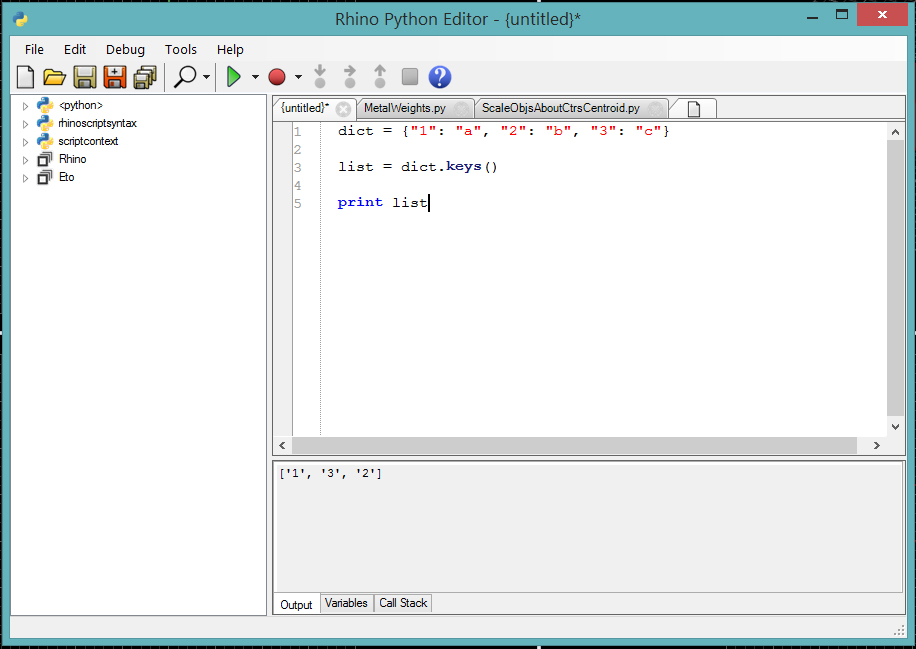Python: Create Dictionary From Two Lists (Keys & Values)
Learn how to efficiently create Python dictionaries from separate lists of keys and values using concise code examples and explanations.
Learn how to efficiently create Python dictionaries from separate lists of keys and values using concise code examples and explanations.
In Python, you can seamlessly merge two lists, one containing keys and the other holding corresponding values, into a dictionary using a concise one-liner. This involves the combined power of the zip and dict functions.
Let's say you have two lists: one for keys and one for values.
keys = ['name', 'age', 'food']
values = ['Monty', 42, 'spam']You can combine these lists into a dictionary in a single line of code using the zip and dict functions.
my_dict = dict(zip(keys, values))Here's how it works:
zip(keys, values): This pairs up the corresponding elements from your two lists, creating tuples like ('name', 'Monty'), ('age', 42), and ('food', 'spam').
dict(...): The dict function takes this sequence of tuples and interprets them as key-value pairs, building your dictionary.
Now, if you print my_dict, you'll get:
{'name': 'Monty', 'age': 42, 'food': 'spam'}This approach is efficient and widely used in Python.
The code creates a dictionary called my_dict where keys are 'name', 'age', and 'food', and their corresponding values are 'Monty', 42, and 'spam', respectively. It achieves this by using the zip function to pair elements from the keys and values lists and then converting these pairs into a dictionary. Finally, the code prints the resulting dictionary.
keys = ['name', 'age', 'food']
values = ['Monty', 42, 'spam']
# Combine keys and values into a dictionary
my_dict = dict(zip(keys, values))
# Print the resulting dictionary
print(my_dict) # Output: {'name': 'Monty', 'age': 42, 'food': 'spam'}Explanation:
zip(keys, values): This function takes two or more iterables (like lists) and returns an iterator of tuples. Each tuple groups corresponding elements from the input iterables. In this case, it creates:
('name', 'Monty')('age', 42)('food', 'spam')dict(...): The dict() constructor can directly create a dictionary from a sequence of key-value pairs. Since zip provides these pairs as tuples, dict() uses them to build the dictionary:
'name' becomes the key for the value 'Monty'.'age' becomes the key for the value 42.'food' becomes the key for the value 'spam'.zip will only pair elements up to the length of the shorter list, potentially leading to data loss. Consider adding checks for equal length or handling unequal lengths gracefully.for loop for more explicit control.keys list contains duplicates, the later occurrences will overwrite earlier ones in the resulting dictionary. Ensure your keys are unique before creating the dictionary.collections.OrderedDict instead of dict.zip and dict.This article explains a concise way to create a Python dictionary from two separate lists containing keys and values.
Method:
zip(keys, values) to pair corresponding elements from the key and value lists into tuples.zip directly into the dict() function. This converts the tuples into key-value pairs within the dictionary.Example:
keys = ['name', 'age', 'food']
values = ['Monty', 42, 'spam']
my_dict = dict(zip(keys, values))
print(my_dict) # Output: {'name': 'Monty', 'age': 42, 'food': 'spam'}Key takeaway: This one-liner provides an efficient and Pythonic way to combine separate lists into a dictionary.
This method, combining zip and dict, offers a powerful and efficient way to create dictionaries from separate key and value lists in Python. Understanding this technique can significantly enhance your data manipulation capabilities, especially when working with structured data. Remember to consider potential issues like unequal list lengths and duplicate keys, and explore alternative methods like dictionary comprehensions for specific use cases or performance optimization. By mastering these techniques, you can write cleaner, more effective Python code for a wide range of data handling tasks.
 Getting the keys and values of a dictionary in the original order as a list | Hello and a nice week to everyone, I am trying to extract the keys and values of a dictionary (which has 20 keys and their values), into two separate lists in the order that they appear in the dictionary but it seems like dict.keys() method works differently. How can I achieve that? Here is my code and what I get: What I want to get is: [‘1’, ‘2’, ‘3’]
Getting the keys and values of a dictionary in the original order as a list | Hello and a nice week to everyone, I am trying to extract the keys and values of a dictionary (which has 20 keys and their values), into two separate lists in the order that they appear in the dictionary but it seems like dict.keys() method works differently. How can I achieve that? Here is my code and what I get: What I want to get is: [‘1’, ‘2’, ‘3’] How can I make a Python dictionary from separate lists of keys and ... | Better Stack lets you see inside any stack, debug any issue, and resolve any incident.
How can I make a Python dictionary from separate lists of keys and ... | Better Stack lets you see inside any stack, debug any issue, and resolve any incident. Python | Split dictionary keys and values into separate lists ... | A Computer Science portal for geeks. It contains well written, well thought and well explained computer science and programming articles, quizzes and practice/competitive programming/company interview Questions.
Python | Split dictionary keys and values into separate lists ... | A Computer Science portal for geeks. It contains well written, well thought and well explained computer science and programming articles, quizzes and practice/competitive programming/company interview Questions. Python Dictionary from Two Lists: A Comprehensive Guide - Pierian ... | Become an expert in Python, Data Science, and Machine Learning with the help of Pierian Training. Get the latest news and topics in programming here.
Python Dictionary from Two Lists: A Comprehensive Guide - Pierian ... | Become an expert in Python, Data Science, and Machine Learning with the help of Pierian Training. Get the latest news and topics in programming here. Syntax for aliases to keys of python dictionaries - Ideas ... | Description There are cases where keys of python dictionaries may need aliases. When two keys point to the same value, duplication can also be avoided with this feature. How it is done currently: foo = { key1: "value", key2: "value", ... } Here “value” is repeatedly used as value of the keys. When there are more keys with the same value, the more duplication occurs. See the following syntax: Conceptual syntax foo = { key1, key2, ...: "value" } Here, the duplication is les...
Syntax for aliases to keys of python dictionaries - Ideas ... | Description There are cases where keys of python dictionaries may need aliases. When two keys point to the same value, duplication can also be avoided with this feature. How it is done currently: foo = { key1: "value", key2: "value", ... } Here “value” is repeatedly used as value of the keys. When there are more keys with the same value, the more duplication occurs. See the following syntax: Conceptual syntax foo = { key1, key2, ...: "value" } Here, the duplication is les... Built-in Types — Python 3.12.7 documentation | The following sections describe the standard types that are built into the interpreter. The principal built-in types are numerics, sequences, mappings, classes, instances and exceptions. Some colle...
Built-in Types — Python 3.12.7 documentation | The following sections describe the standard types that are built into the interpreter. The principal built-in types are numerics, sequences, mappings, classes, instances and exceptions. Some colle...